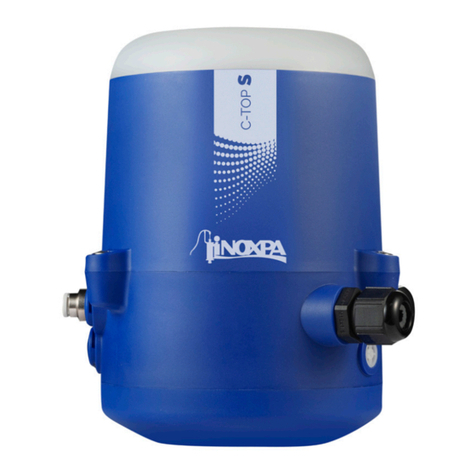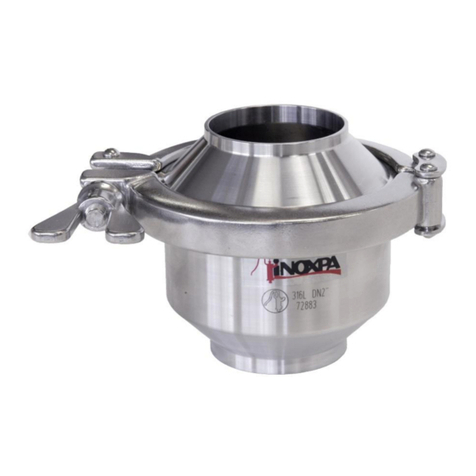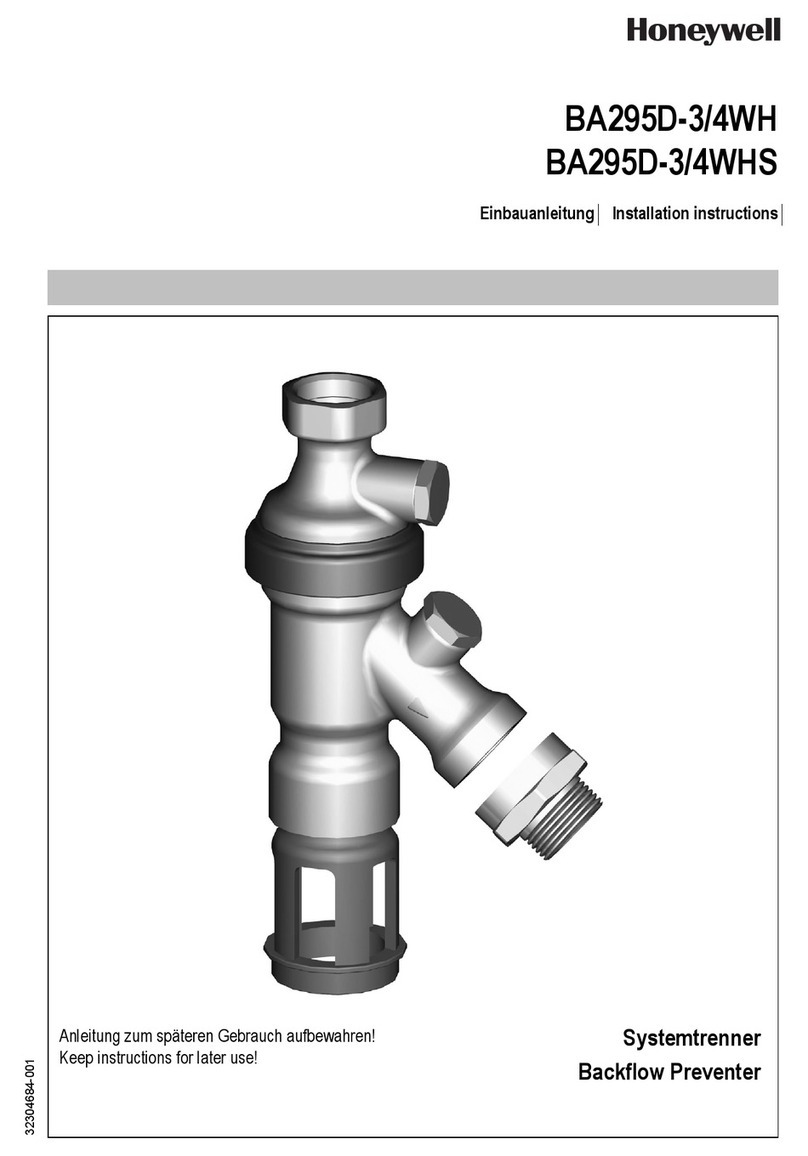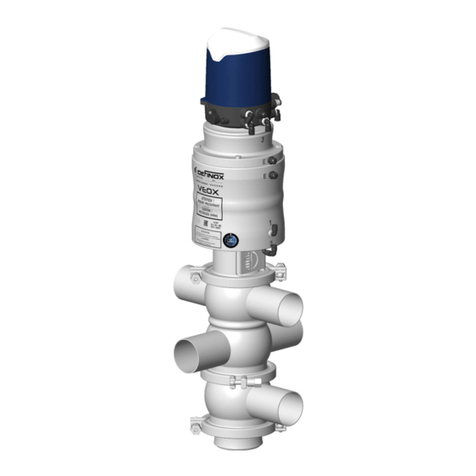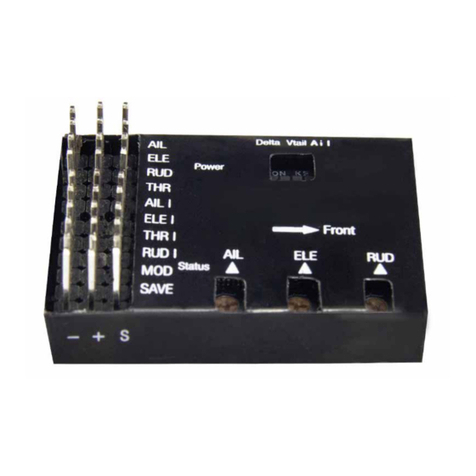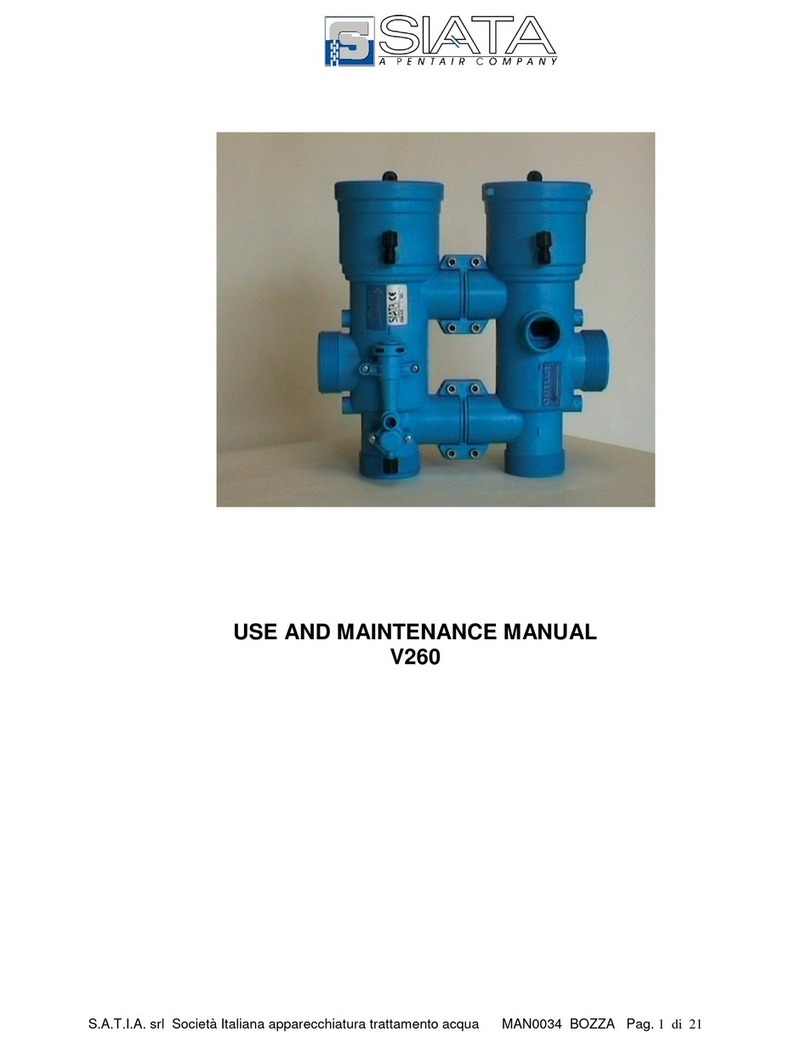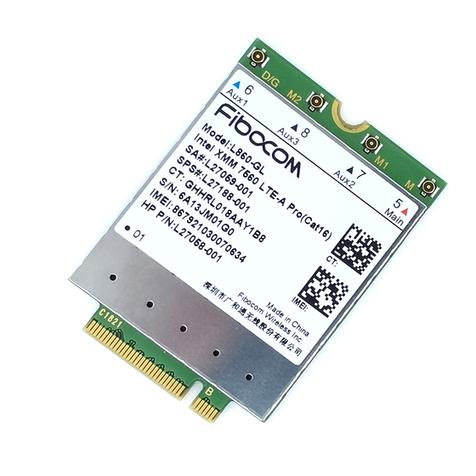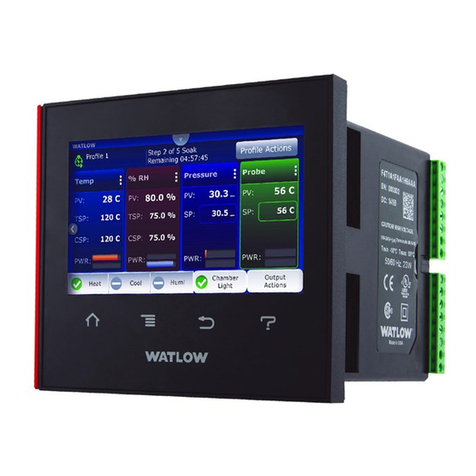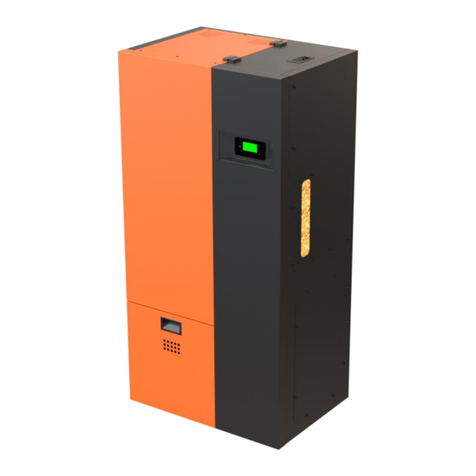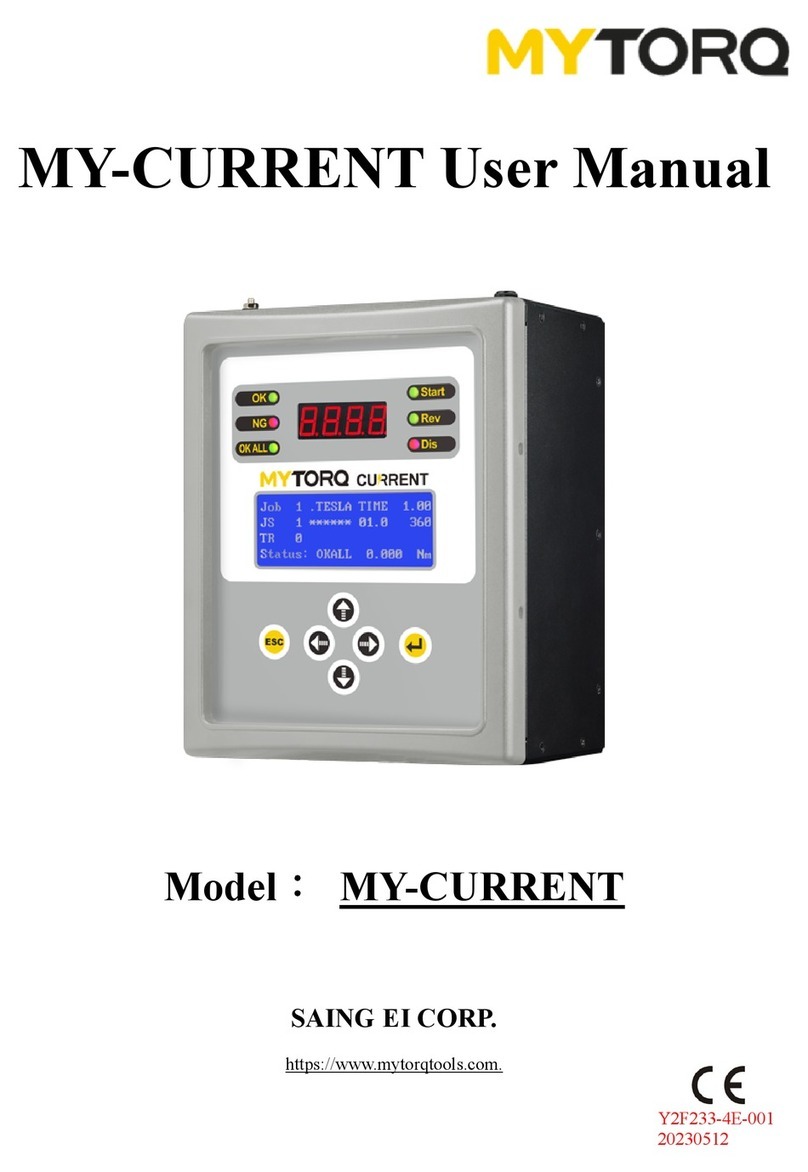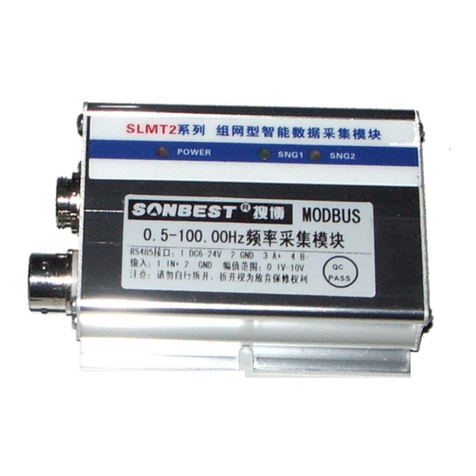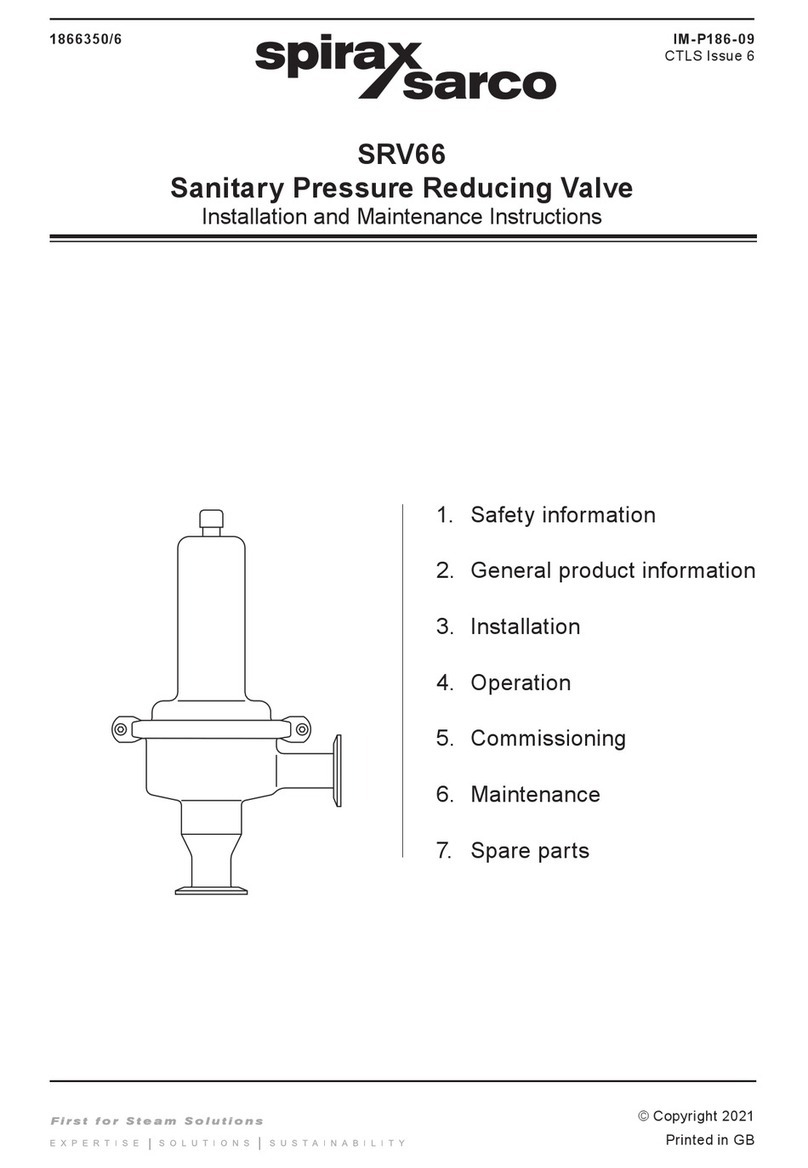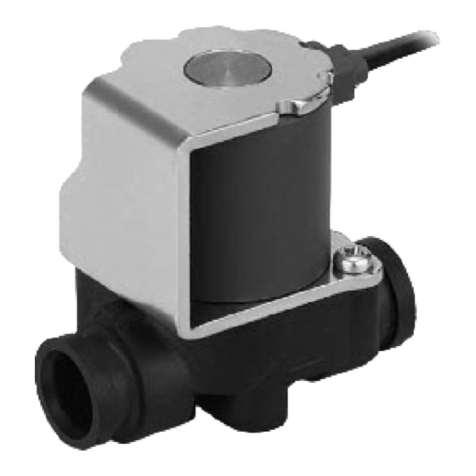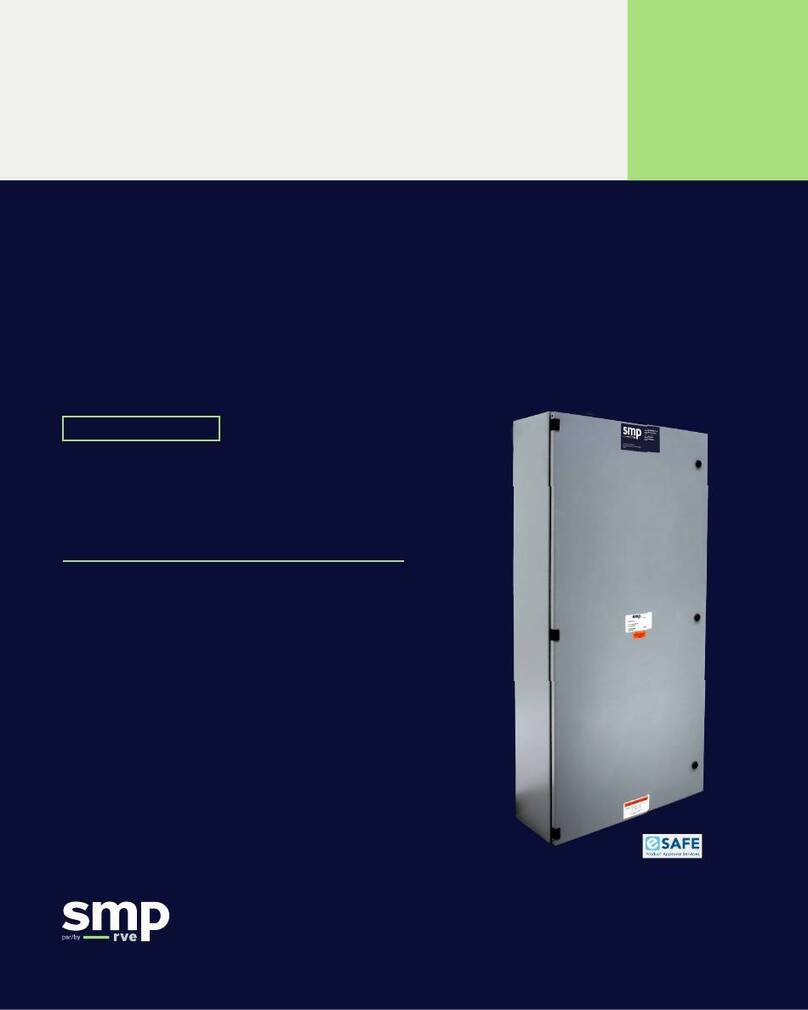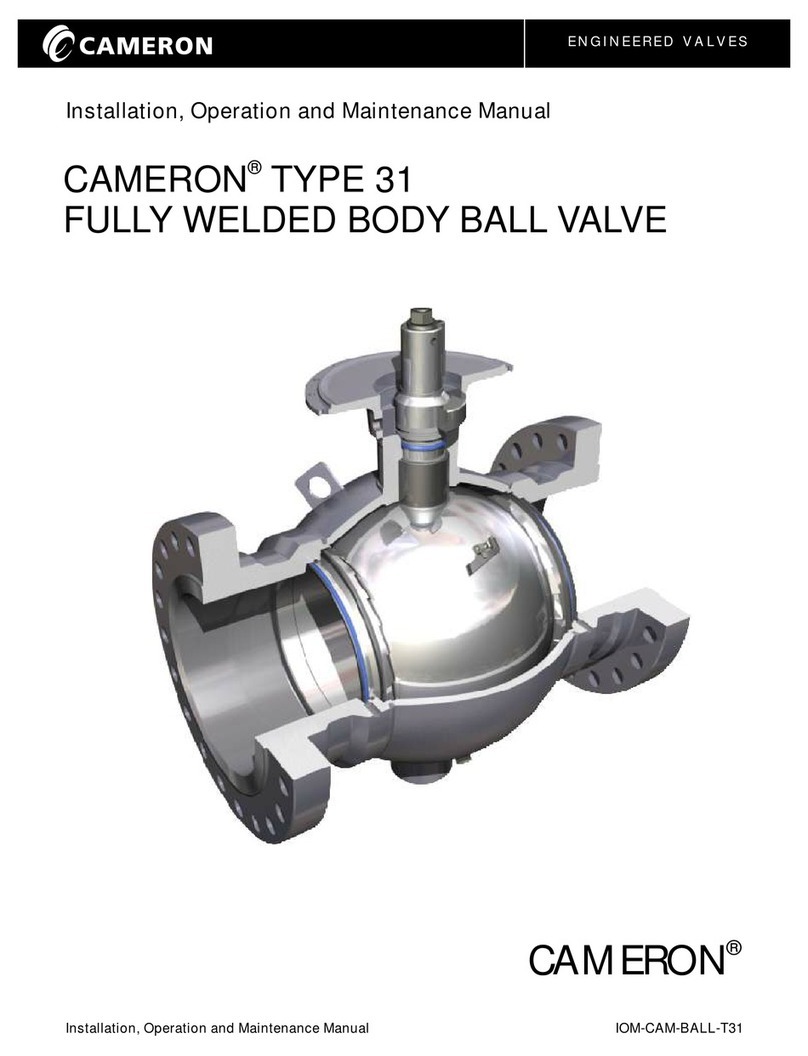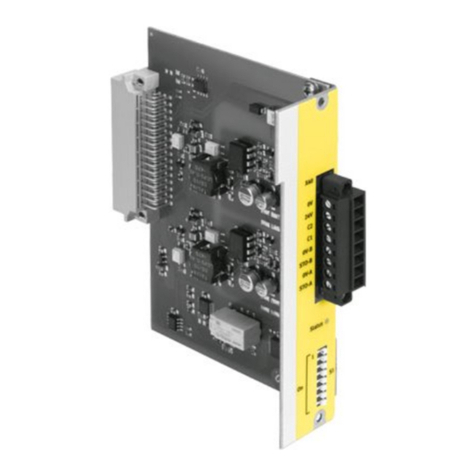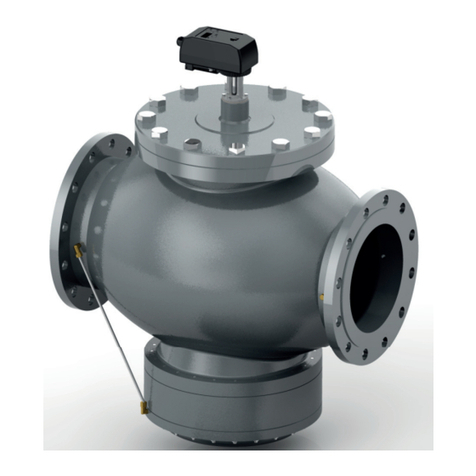INOXPA 74700 Manual

INSTALLATION, SERVICE AND
MAINTENANCE INSTRUCTIONS
OVERFLOW VALVE
INOXPA, S.A.
c/Telers, 54 Aptdo. 174
E-17820 Banyoles
Girona (Spain)
Tel. : (34) 972 - 57 52 00
Fax. : (34) 972 - 57 55 02
Email: inoxpa@inoxpa.com
www.inoxpa.com
Original Manual
10.207.30.00EN_RevC
ED. 2010/11

Declaration of Incorporation
The manufacturer: INOXPA, S.A.
c/ Telers, 57
17820 Banyoles (Girona), Spain
herewith declares that the machine:
OVERFLOW valve 74700
with the serial number: ________________
conforms to the relevant provisions of the following directives:
Machinery Directive 2006/42/EC (RD 1644/2008)
Pressure equipment Directive 97/23/EC
It also declares that the technical documentation for this partly completed machinery has been developed in
compliance with Appendix VII Section B and it agrees to issue this documentation as and when required by the
national authorities.
In compliance with Regulation (EC) 1935/2004 on materials and articles intended to come into contact with food.
In compliance with Regulation (EC) 2023/2006 on good manufacturing practice for materials and articles intended
to come into contact with food.
The aforementioned partly completed machinery shall NOT be put into service until the final machinery into which
it is to be incorporated has been declared in conformity with the Machinery Directive, as required by Appendix II A.
Identification of the person empowered to draw up the Declaration on behalf of the manufacturer, and qualified to
compile the technical file established by the Community:
Banyoles, 8 January 2014
David Reyero Brunet
Technical Office Manager

ED. 2010/11 1.Safety 3
1.Safety
1.1. INSTRUCTION MANUAL.
This instruction manual contains basic indications which should be fulfilled during the installation, starting and maintenance.
The information published in the instruction manual is based on updated information.
INOXPA reserves the right to modify this instruction manual without prior notice.
1.2. START-UP INSTRUCTIONS.
This instruction manual contains essential useful information to handle and maintain your valve appropriately .
Not only should the safety instructions indicated in this chapter be observed and fulfilled, but so should the special measures
and recommendations included in the other chapters of this manual. These instructions should be kept in a safe location near
the installation.
1.3. SAFETY.
1.3.1. Warning symbols.
General danger of injury
Danger of injuries caused by the rotary
parts of the equipment
Electrical hazard
Danger! Caustic or corrosive agents.
Danger! Suspended loads
Danger for the correct operation of the
equipment.
Compulsory requirement to ensure safety
at work
Use of goggles is compulsory.
1.4. GENERAL SAFETY INSTRUCTIONS.
Read the instruction manual carefully before installing and starting up the valve. Contact INOXPA in
case of doubt
1.4.1. During the installation.
The
Technical Specifications
of Chapter 8 should always be observed.
The installation and use of the valve should always be carried out in accordance with applicable
regulations regarding health and safety.
Before starting up the valve, verify that the assembly is correct and that the shaft is perfectly
aligned. An incorrect alignment and/or excessive force in securing the valve may cause serious
mechanical problems in the valve.
1.4.2. During operation.
The
Technical Specifications
of Chapter 8 should always be observed. Under no circumstances can the
limit values specified be exceeded.
NEVER touch the valve and/or the tubes in contact with the liquid during operation. You risk being
burnt if you work with hot products.

4 1.Safety ED. 2010/11
The valve contains parts operating in linear movement. Do not place your hands or fingers in the
valve-closing area. This may cause serious injury.
1.4.3. During maintenance
The
Technical Specifications
of Chapter 8 should always be observed.
NEVER disassemble the valve until the pipes have been emptied. Bear in mind that the liquid in the
pipe may be dangerous or extremely hot. Consult the regulations in effect in each country for these
cases.
Do not leave parts loose on the floor.
All electrical work should be carried out by authorised personnel.
1.4.4. In compliance with the instructions.
Any non-fulfilment of the instructions may result in a risk for the operators, the environment and the machine, and may result
in the loss of your right to claim damages
This non-fulfilment may result in the following risks:
Failure of important functions of the machines/plant.
Failure of specific maintenance and repair procedures.
Possibility of electric, mechanical and chemical risks.
Will place the environment in danger due to the release of substances.
1.5. GUARANTEE.
Any guarantee will be cancelled immediately and as a matter of law and, in addition, we will require compensation for any
claims of civil liability presented by third parties, if:
The installation and maintenance work has not been carried out according to the instructions of this manual.
The repairs are not carried out by our personnel or have been carried out without our written authorisation.
The parts used are not INOXPA original parts.
Modifications have been carried out on our materials without written authorisation.
The material has been badly used, incorrectly used, or used with negligence or has not been used according to the
indications and intended use specified in this manual.
The general conditions of delivery already in your possession are also applicable.
Please do not hesitate to contact us in case of doubts or more complete explanations are required on specific data
(adjustments, assembly, disassembly, etc.).

ED. 2010/11 2.Table of contents 5
2.Table of contents
1. Safety 3
1.1. Instruction manual.........................................................................................................3
1.2. Start-up instructions.......................................................................................................3
1.3. Safety...........................................................................................................................3
1.4. General safety instructions..............................................................................................3
1.5. Guarantee.....................................................................................................................4
2. Table of contents 5
3. Receiving and Installation 6
3.1. Check the shipment .......................................................................................................6
3.2. Delivery and unpacking ..................................................................................................6
3.3. Identification .................................................................................................................6
3.4. Location........................................................................................................................7
3.5. Flow direction................................................................................................................7
3.6. Overflow valve position. .................................................................................................7
3.7. Assembly. .....................................................................................................................7
3.8. Inspecting and checking.................................................................................................8
3.9. Welding. .......................................................................................................................8
4. Star-up 9
4.1. Valve applications. .........................................................................................................9
4.2. Start-up. .......................................................................................................................9
4.3. Operation......................................................................................................................9
4.4. Valve calibration. ...........................................................................................................9
5. Operating problems Causes and solutions 10
6. Maintenance 11
6.1. General information .....................................................................................................11
6.2. Maintenance................................................................................................................11
6.3. Cleaning......................................................................................................................12
7. Assembly and disassembly 13
7.1. Disassembly / assembly of the overflowvalve fig: 74700..................................................13
7.2. Disassembly / assembly of the overflowvalve fig: 74700m. ..............................................14
8. Technical Specifications 16
8.1. Overflow valve dimensions............................................................................................17
8.2. Section and parts list....................................................................................................18
8.3. Parts lists ....................................................................................................................20

6 3.Receiving and Installation ED. 2010/11
3. Receiving and Installation
3.1. CHECK THE SHIPMENT
The first thing to do on receiving the valve is to verify that it is matches the delivery note.
INOXPA will inspect all the equipment before packing, although it cannot guarantee that the merchandise will arrive intact to
the user. For this reason, the valve received and any other article should be checked and, if it is found not to be in good
condition and/or not all parts are included, the carrier should submit a report as soon as possible.
Each valve has a manufacturing number engraved. Indicate the manufacturing number in all documents and correspondence.
3.2. DELIVERY AND UNPACKING
INOXPA will not be responsible for the inappropriate unpacking of the valve and its components.
3.2.1. Delivery:
Check that all the parts indicated in the delivery slip exist
Complete valve.
Its components (if supplied).
Delivery slip.
Instruction manual.
3.2.2. Unpacking:
Remove all traces of packing materials from the valve or parts.
Inspect the valve or its constituent parts for possible damage caused during transport.
Avoid any possible damage to the valve and its components.
3.3. IDENTIFICATION

ED. 2010/11 3.Receiving and Installation 7
The buyer or user will be responsible for the assembly, installation, starting and operation of the
valve.
3.4. LOCATION.
Place the valve in such a way as to facilitate inspections and checks. Leave sufficient space around the valve for appropriate
inspection, separation and maintenance (See Section 3.7.1).
3.5. FLOW DIRECTION.
The overflow valve is designed to be installed according to the indicated direction of flow.
3.6. OVERFLOW VALVE POSITION.
The overflow valve is designed to be installed in any position, although fitting it upside down is not recommended.
3.7. ASSEMBLY.
Once the location of the valve is established, the pipe can be connected by welding the body or by jeans of accessoriees
(unions). The overflow valve is designed to be installed in any position, although fitting it ápside down is not recommended.
Excessive stress should be avoided during the assembly of
the valves and special attention should be given to the
following:
Vibration which may be produced in the installation.
Expansion of the pipes during circulation of hot liquids.
The weight that the pipes can withstand.
Excessive intensity of welding.
Recommended
Not
recommended

8 3.Receiving and Installation ED. 2010/11
3.8. INSPECTING AND CHECKING
Check the following before use:
Check that the clamp and the adjusting nuts
are well tightened.
If it has a handle, turn it several times to
ensure that it works. (the seat of the valve
must lift and fall)
3.9. WELDING.
The welding work can only be carried out by people qualified, trained and equipped with the
necessary means to carry out this work.
Disassemble the valve before starting the welding work.
3.9.1. Welding ende overflow valve . 74700
Disassemble the valve as indicated in the
Assembly and disassembly
section.
Weld the valve body to the pipes.
When welding the valve body, it is very important to maintain the minimum distance (dimension A) enabling disassembly
of the valve for later checks and replacement of internal valve parts (seals, shafts, springs). This distance is also
important when the valves are supplied with a handle.
DN
A
No
handle
With
handle
25-1”
250
325
32
260
335
40-1 ½”
275
345
50-2”
300
360
65-2 ½”
355
425
80-3”
380
445

ED. 2010/11 4.Star-up 9
4.Star-up
The start-up of the valve can be carried out provided the instructions indicated in Chapter 3 –
Receiving and Installation
are
followed.
4.1. VALVE APPLICATIONS.
This equipment is suitable for his use in food process.
Overflow valves of type 74700 and 74700M are basically used to avoid any excessive pressure in the pipes, particularly in
positive-displacement pumps, in order to prevent any over-pressures that may damage the concerned equipment (bypass
assembly).
4.2. START-UP.
Before start-up, the responsible persons should be duly informed of the operation of the valve and
the safety instructions to be followed. This instruction manual should be available to personnel at all
times.
The following should be taken into consideration before starting up the valve;
Check that the pipe and valve are completely free from any traces of welding or other foreign matter. Carry out the
cleaning of the system if required.
Verify the smooth operation of the valve. If necessary, lubricate moving/rotating parts with special grease or soapy
water.
Check for possible leaks and check that all the pipes and connections are watertight and free from leaks
Actuate the valve (if supplied with a handle)
4.3. OPERATION.
Do not modify the operating parameters for which the valve has been designed without written prior
authorisation from INOXPA.
Danger of burns! Do not touch the valve or pipes when hot liquids are circulating or when cleaning
and/or sterilisation are being carried out.
4.4. VALVE CALIBRATION.
The overflow valve can be shipped pre-calibrated in factory, provided this has been requested in writing on the order.
Overflow valve calibration is carried out using a bypass-type assembly (flow recirculation). To carry out the calibration, it is
necessary to use a pump, a gauge (for pressure measurements), a shut-off valve and the overflow valve.
Operate the pump with the shut-off valve in closed position. The flow will make the bypass (recirculation) by passing through
the overflow valve. Tighten the upper nut (first loosening the lock nut) of the overflow valve until the gauge shows that the
pump is at maximum working pressure. The overflow valve will remain calibrated to the pressure indicated on the gauge; if it
exceeds this pressure, then the overflow valve will open and make the flow recirculate preventing the installation from being
damaged.

10 5.Operating problems. Causes and solutions ED. 2010/11
5.Operating problems. Causes and
solutions
PROBLEM
CAUSE/EFFECT
SOLUTION
VALVE DOES NOT
CLOSE
Dirt / foreign matter between the seal of the shaft and the
seat of the valve body.
The springs are not applying pressure to the stop washer
of the shaft
The check valve seal is worn and defective.
Clean the body and seat.
Increase the tightening torque of
the springs.
Replace the seals.
INTERNAL LEAK OF
THE PRODUCT
(VALVE CLOSED)
Premature wearing of the seals.
Replace the seals.
Premature
wearing of
the seals.
Watertight seal worn or affected by the
product.
Excessive pressure in the line.
Working temperature too high
Loss of watertightness (vibration).
Replace the seals with others of
different material and more
appropriate to the product.
Tighten any loose components.
Clean frequently.
Backpressure
Replace the spring with a stronger
one.
EXTERNAL LEAK OF
THE PRODUCT
Seal of the body defective
Seal of the shaft defective
Replace the seals with new ones
VALVE DOES NOT
OPEN/CLOSE
Deformation of seat seal.
Spring in poor condition and/or jammed (dirtiness)
The valve does not close when the pressure increases.
Replace the seal seat with other of
different quality, if prematurely
deteriorated.
Replace spring and/or shaft
(clean).
Adjust the valve
Recalibrate the valve. See point
4.4 Valve calibration.

ED. 2010/11 6.Maintenance 11
6.Maintenance
6.1. GENERAL INFORMATION
This valve, just like any other machine, requires maintenance. The instructions contained in this manual cover the identification
and replacement of spare parts. The instructions have been prepared for maintenance personnel and for those responsible for
the supply of spare parts.
Carefully read Chapter 8.
Technical Specifications
.
All replaced material should be duly eliminated/recycled according to the directives in effect in the
area.
Assembly and disassembly of the valves must only be carried out by qualified staff.
Before starting on maintenance work, ensure that the tubes are not pressurised.
6.2. MAINTENANCE.
The following is recommended for appropriate maintenance:
Regular inspection of the valve and its components.
Keep a record of the operation of each valve, noting any incidents.
Always have spare seals in stock.
During maintenance, pay particular attention to the danger indications indicated in this manual manual.
The valve and pipes should not be pressurised during maintenance.
The valve should not be hot during maintenance. Danger of burns!.
6.2.1. Maintenance of the seals.
REPLACEMENT OF SEALS
Preventive maintenance
Replace after twelve (12) months.
Maintenance after a leak
Replace at the end of the process.
Scheduled maintenance
Regularly check that there are no leaks and that the valve is operating smoothly.
Keep a record of the valve.
Use statistics to plan inspections.
Lubrication
During assembly, apply lubricants compatible with the seal material. See the
following table.
SEAL COMPONENT
LUBRICANT
Class NLGI DIN
51818
NBR/ FPM/ VMQ
Klübersynth UH 1 64-2403
3
EPDM/ NBR/ FPM
PARALIQ GTE 703
3
The time interval between each preventive maintenance may vary according to the working conditions to which the valve is
submitted: Temperature, pressure, number of operations per day, type of cleaning solutions used, etc.
6.2.2. Storage
Storage of the valves should be carried out in an enclosed area, under the following conditions:
Temperature from 15ºC to 30ºC
Relative humidity <60%
Open-air storage of the equipment is NOT allowed.

12 6.Maintenance ED. 2010/11
6.2.3. Spare parts
To request spare parts, it is necessary to indicate the type of valve, the position and the description of the part which can be
found in chapter 8.
Technical Specifications
.
6.3. CLEANING
The use of aggressive cleaning products such as caustic soda and nitric acid may cause burns to the
skin.
Use rubber gloves during the cleaning process.
Always use protective goggles.
6.3.1. Automatic CIP (cleaning-in-place)
If the valve is installed in a system provided with the CIP process, its disassembly will not be required.
Cleaning solutions for CIP processes.
Only use clear water (chlorine-free) to mix with the cleaning agents:
a) Alkaline solutions: 1% by weight of caustic soda (NaOH) at 70ºC (150ºF)
1 Kg NaOH + 100 l. of water = cleaning solution
o
2,2 l. NaOH al 33% + 100 l. of water = cleaning solution
b) Acid solution: 0,5% by weight of nitric acid (HNO3) at 70ºC (150ºF)
0,7 litres HNO3at 53% + 100 l. of water= cleaning solution
Check the concentration of cleaning solutions; it may cause the deterioration of the watertight seals
of the valve.
To eliminate any remains of cleaning products, ALWAYS perform a final rinse with clean water on completion of the cleaning
process.
Before beginning the disassembly and assembly work, clean the valve inside as well as outside.
6.3.2. Automatic SIP (sterilization-in-place)
The process of sterilization with steam is applied to all the equipment including the pigging.
Do NOT start the equipment during the process of sterilization with steam.
The parts/materials suffer no damage if the indications specified in this manual are observed.
No cold liquid can enter the equipment till the temperature of the equipment is lower than 60°C
(140°F).
Maximum conditions during the SIP process with steam or overheated water
a) Max. temperature: 140°C / 284°F
b) Max. time: 30 min
c) Cooling: Sterile air or inert gas
d) Materials: EPDM / PTFE (recommended)
FPM / NBR / VMQ (not recommended)

ED. 2010/11 7.Assembly and disassembly 13
7.Assembly and disassembly
Proceed with caution. There is danger of personal injury.
Assembly and disassembly of the valves must only be carried out by qualified staff.
Caution! Recoiled springs.
There is danger of injury if the valve clamp is released (pos. 34) while the valve is still at rest. The
recoiled springs may abruptly throw the regulating nut upwards (pos. 26C) .
It is essential to release the tension in the springs before loosening the clamp.
7.1. DISASSEMBLY / ASSEMBLY OF THE OVERFLOWVALVE FIG: 74700
Disassembly
1. Loosen the lock nut (26F).
2. Mark the position in the shaft (08) and
then unscrew and release the valve nut
(26C).
3. Remove the clamp (34).
4. Remove the spring cover (12A). The
shaft stop washer (25) and the spring
(06) will be pulled out.
5. Pull the shaft (08) upwards together
with the body cap (12), shaft seal (05)
and the O-ring (20B).
6. Remove the shaft seal (05) from the
body cap (12).
7. Remove the O-ring (20B) from the body
cap (12).
8. Remove the elastic ring (45) and the
shaft seel (08A).
9. Remove the seat seel (19).
Assembly
1. Place the seat seal (19) on the shaft (08).
2. Place the shaft seal (08A) and attach the
assembly with the elastic ring (45).
3. Place the O-ring (20B) on the body cap
(12).
4. Place the shaft seal (05) in the body cap
(12).
5. Place the shaft assembly through the shaft
seal (05) and onto the body (01).
6. Mount the spring cover (12A) on the valve
body (01).
7. Assemble the spring cover (12A) to the
valve housing (01) with the clamp (34).
Tighten the nut of the clamp.
8. Place the stop washer (25) and the
springs (06) on the spring cover (12A).
9. Screw the lock nut on (26F) passing the mark made before disassembly.
10. Screw the nut on (26C) until reaching the mark.
11. Screw the lock nut (26F) against the nut (26C) to fix it in place.
A spanner is required to disassemble the valve.

14 7.Assembly and disassembly ED. 2010/11
7.2. DISASSEMBLY / ASSEMBLY OF THE OVERFLOWVALVE FIG: 74700M.
Disassembly
1. Remove pin (50A) from the handle (04).
2. Remove the handle (04) from the shaft
(08).
3. Loosen the lock nut (26F).
10. Mark the position in the shaft (08) and
then unscrew and release the valve nut
(26C).
11. Remove the clamp (34).
12. Remove the spring cover (12A). The
shaft stop washer (25) and the spring
(06) will be pulled out.
13. Pull the shaft (08) upwards together
with the body cap (12), seat seal (05)
and the O-ring (20B).
14. Remove the seat seal l (05) from the
body cap (12).
15. Remove the O-ring (20B) from the body
cap (12).
16. Remove the elastic ring (45) and the
shaft sleeve (08A).
17. Remove the seat seal (19).
Assembly
1. Mount the seat seal (19) on the shaft (08).
2. Mount the shaft sleeve (08A) and attach
the assembly with the elastic ring (45).
3. Place the O-ring (20B) on the body cap
(12).
4. Place the seat seal (05) in the body cap
(12).
5. Mount the shaft assembly over the seat
seal (05) and place onto the body (01).
6. Mount the spring cover (12A) on the valve
body (01).
7. Assemble the spring cover (12A) to the
valve housing (01) with the clamp (34).
Tighten the nut of the clamp.
8. Place the spring washer (25) and the
springs (06) on the body cap (12A).
9. Screw the lock nut on (26F) passing the
mark made before disassembly.
10. Screw the nut on (26C) until reaching the
mark.
11. Screw the lock nut (26F) against the nut
(26C) to fix it in place.
12. Place the handle (04) on the shaft (08) ensuring that the holes are lined up.
13. Insert the pin (50A) into the hole of the handle (04) and the shaft (08).
A spanner is required to disassemble the valve.

ED. 2010/11 7.Assembly and disassembly 15
7.3. DISASSEMBLY / ASSEMBLY OF THE OVERFLOWVALVE WITH PTFE SEAT.
Disassembly
1. Loosen the lock nut (26F).
2. Mark the position in the shaft (08) and then unscrew
and release the valve nut (26C).
3. Remove the clamp (34).
4. Remove the spring cover (12A). The shaft stop
washer (25) and the spring (06) will be pulled out.
5. Pull the shaft (08) upwards together with the body
cap (12), shaft seal (05) and the O-ring (20B).
6. Remove the shaft seal (05) from the body cap (12).
7. Remove the O-ring (20B) from the body cap (12).
8. Remove the elastic ring (45) and the shaft seel
(08A).
9. Remove the O-ring (20C) to the shaft seel (08A).
10. Remove the seat seel (19).
Assembly
1. Place the seat seal (19) on the shaft (08) and the O-
ring (20C) in the shaft seel (08A).
2. Place the shaft seal (08A) and attach the assembly with
the elastic ring (45).
3. Place the O-ring (20B) on the body cap (12).
4. Place the shaft seal (05) in the body cap (12).
5. Place the shaft assembly through the shaft seal (05)
and onto the body (01).
6. Mount the spring cover (12A) on the valve body (01).
7. Assemble the spring cover (12A) to the valve housing
(01) with the clamp (34). Tighten the nut of the clamp.
8. Place the stop washer (25) and the springs (06) on the
spring cover (12A).
9. Screw the lock nut on (26F) passing the mark made
before disassembly.
10. Screw the nut on (26C) until reaching the mark.
11. Screw the lock nut (26F) against the nut (26C) to fix it
in place.
A spanner is required to disassemble the valve.

16 8.Technical Specifications ED. 2010/11
8.Technical Specifications
VALVE GENERAL DATA
Maximum working pressure
DN-25/80
DN-1"/3"
10 bar
Maximum working temperature
121ºC (250ºF) EPDM standard seals
(Other qualities of seals will be adapted for higher temperatures)
Opening pressure
Spring-adjustable.
Surface finish
In contact with the product: Ra 0,8 μm
External surfaces: Machined finish (turned on lathe)
Maximum output
DN-25/1”
DN-32
DN-40/1½”
DN-50/2”
DN-65/2½”
DN-80/3”
10000lts/h
12000lts/h
15000lts/h
20000lts/h
35000lts/h
55000lts/h
VALVE MATERIALS
Parts in contact with the product
AISI 316L (1.4404)
Other steel parts
AISI 304L (1.4306)
Seals in contact with the product
EPDM (Estándar) –VITON - PTFE
Acabado superficial
Parts in contact with the product Ra. 0,8m
Tipo de conexiones
DIN 11851 (Standard)
Connections: Weld, FIL-IDF, BS-RJT, SMS, Clamp, Flanges, Macon
Resistance of the materials / seals depends on the type of pumped product and processing
conditions. Please contact INOXPA for help in making the right choice.

ED. 2010/11 8.Technical Specifications 17
8.1. OVERFLOW VALVE DIMENSIONS
DN
d1
I
H
AISI 316L
DN
d1
I
H
AISI 316L
1”
22,1
50
220
274700101EB
25
26
50
220
274700025EB
1 ½”
34,8
60
240
274700112EB
32
32
55
230
274700032EB
2”
47,5
70
255
274700200EB
40
38
60
240
274700040EB
2 ½”
60,2
80
290
274700212EB
50
50
70
255
274700050EB
3”
72,9
90
310
274700300EB
65
66
80
290
274700065EB
80
81
90
310
274700080EB
DN
d1
I
H1
AISI 316L
DN
d1
I
H1
AISI 316L
1”
22,1
50
230
274700101EAM
25
26
50
230
274700025EAM
1 ½”
34,8
60
250
274700112EAM
32
32
55
240
274700032EAM
2”
47,5
70
265
274700200EAM
40
38
60
250
274700040EAM
2 ½”
60,2
80
305
274700212EAM
50
50
70
265
274700050EAM
3”
72,9
90
325
274700300EAM
65
66
80
305
274700065EAM
80
81
90
325
274700080EBAM
S/S Fig 74700
S/S Fig 74700M

18 8.Technical Specifications ED. 2010/11
8.2. SECTION AND PARTS LIST
FIG:74700
POSITION
DESIGNATION
MATERIAL
QUANTITY
01
Housing
AISI 316L
1
05*
Shaft seal
EPDM
1
06
Spring
AISI 302
1
08
Shaft
AISI 316L
1
08A
Shaft sleeve
AISI 316L
1
11*
Guide bushing
Iglidur G
1
12
Body cap
AISI 316L
1
12A
Spring cover
AISI 304L
1
19*
Gasket
EPDM
1
20B*
O’ring
EPDM
1
25
Spring washer
AISI 304L
1
26C
Nut
AISI 304L
1
26F
Lock nut
AISI 304L
1
34
Clamp
AISI 304
1
45
Elastic ring
AISI 304
1
* Recommended spare parts.
FIG:74700M
POSITION
DESIGNATION
MATERIAL
QUANTITY
01
Housing
AISI 316L
1
04
Handle
AISI 304L
1
05*
Shaft seal
EPDM
1
06
Spring
AISI 302
1
08
Shaft
AISI 316L
1
08A
Shaft sleeve
AISI 316L
1
12
Body cap
AISI 316L
1
12A
Spring cover
AISI 304L
1
19*
Gasket
EPDM
1
20B*
O-ring
EPDM
1
22D
Upper screw
BRONCE
1
25
Spring washer
AISI 304L
1
26C
Nut
AISI 304L
1
26F
Lock nut
AISI 304L
1
34
Clamp
AISI 304
1
45
Elastic ring
AISI 304
1
50A
Pin
AISI 304
1
* Recommended spare parts.

ED. 2010/11 8.Technical Specifications 19
FIG:74700 PTFE SEAT
POSITION
DESIGNATION
MATERIAL
QUANTITY
01
Housing
AISI 316L
1
05*
Shaft seal
FPM
1
06
Spring
AISI 302
1
08
Shaft
AISI 316L
1
08A
Shaft sleeve
AISI 316L
1
11*
Guide bushing
Iglidur G
1
12
Body cap
AISI 316L
1
12A
Spring cover
AISI 304L
1
19*
Gasket
PTFE
1
20B*
O’ring
FPM
1
20C*
O’ring
FPM
1
25
Spring washer
AISI 304L
1
26C
Nut
AISI 304L
1
26F
Lock nut
AISI 304L
1
34
Clamp
AISI 304
1
45
Elastic ring
AISI 304
1
* Recommended spare parts

20 8.Technical Specifications ED. 2010/11
8.3. PARTS LIST
FIG:74700
* Recommended spare parts.
DN
01
05*
06
08
08A
11*
12A
12
25
351249.6
450811.E
1-MU-452447
2-MU-452448
3-MU-452599
452301A.6
452123A.6
GSM1012-10
452210.4
450890.6
1”
351256.6
452618A.6
452617A.6
32
351250.6
1-MU-452449
2-MU-452450
3-MU-452600
452301B.6
452123B.6
40
351251.6
1-MU-452451
2-MU-452452
3-MU-452601
452301C.6
452123C.6
452211.4
450891.6
1 ½”
351257.6
452618C.6
452617C.6
50
351252.6
1-MU-452453
2-MU-452454
3-MU-452602
452301D.6
452123D.6
452212.4
450892.6
2”
351258.6
452618D.6
452617D.6
65
351253.6
1-MU-452455
2-MU-452456
3-MU-452603
452301E.6
452123E.6
GSM1315-10
452213.4
450893.6
2 ½”
351259.6
452618E.6
452617E.6
3”
351260.6
1-MU-452457
2-MU-452458
3-MU-452637
452618F.6
452617F.6
452214.4
450894.6
80
351254.6
452301F.6
452123F.6
DN
19*
20B*
25
26C
26F
34
45
25
452121A.E
O4040835
452119A
452138.4
452137.4
1703200
AE-09000
1”
452616A.E
32
452123B.E
40
452121C.E
O4053535
452119B
452115.4
452117.4
1703212
1 ½”
452616C.E
50
452121D.E
O4066235
1703300
2”
452616D.E
65
452121E.E
O4091635
452119C
452116.4
452118.4
1703400
2 ½”
452616E.E
3”
452616F.E
O4098035
1703412
80
452121F.E
Table of contents
Other INOXPA Control Unit manuals
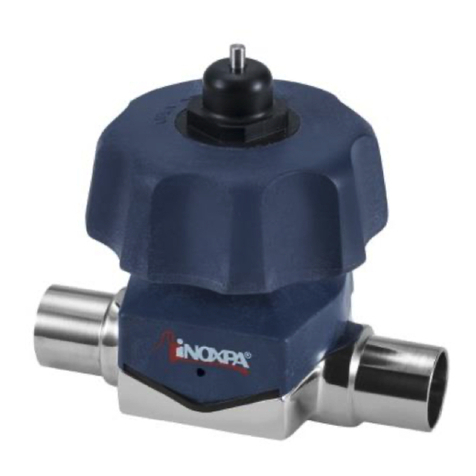
INOXPA
INOXPA VEEVALV Manual
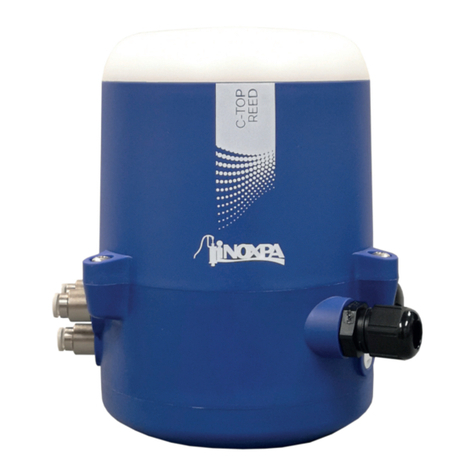
INOXPA
INOXPA C-TOP Reed Manual
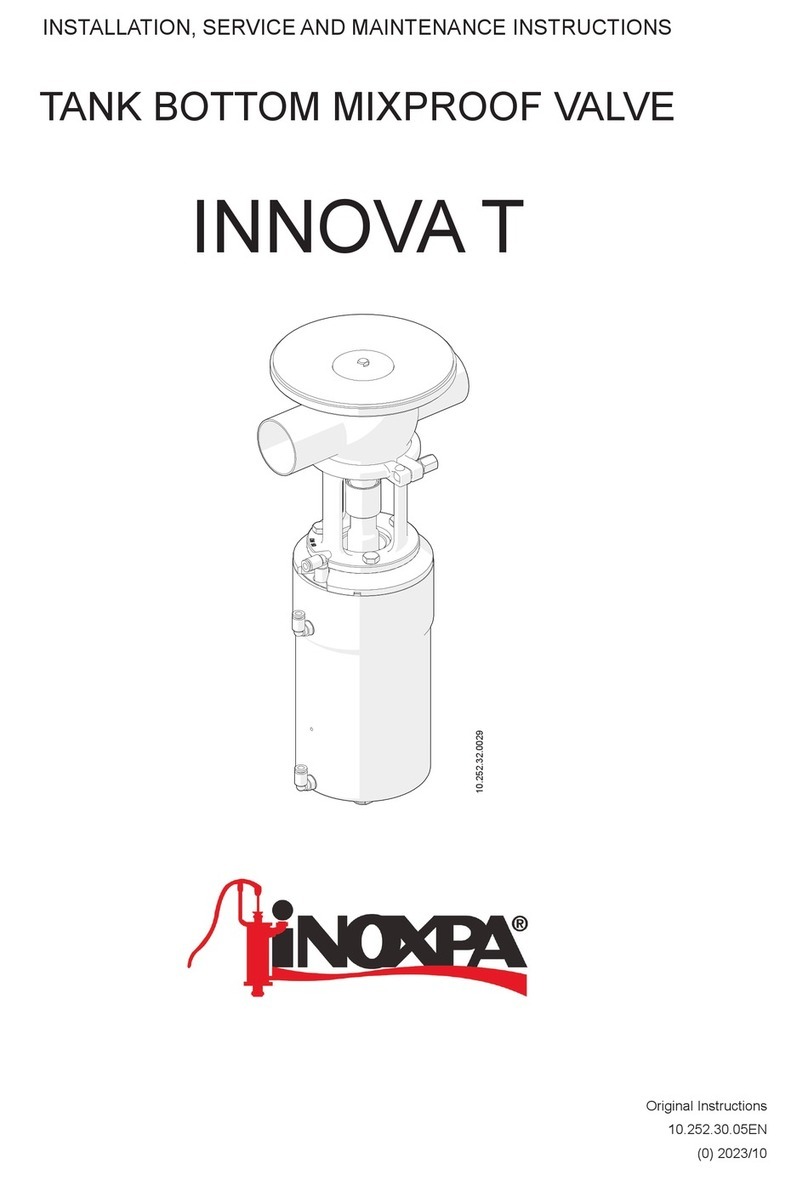
INOXPA
INOXPA INNOVA T Manual
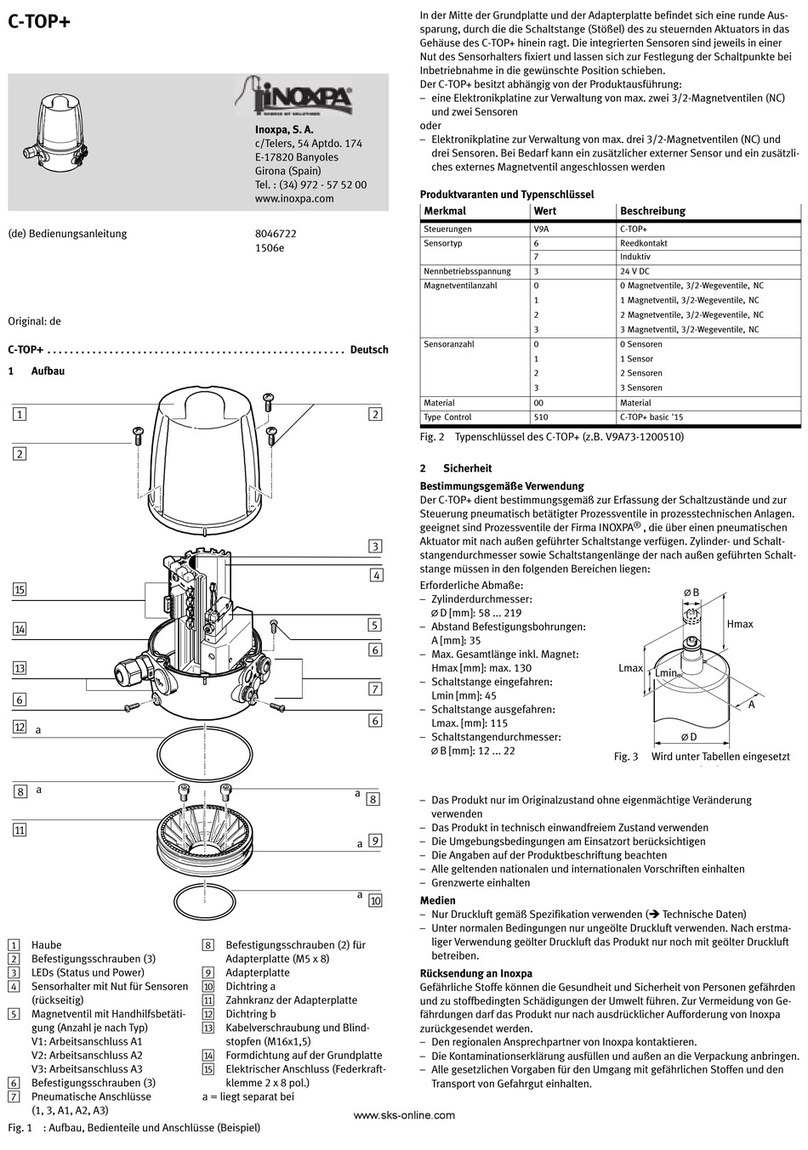
INOXPA
INOXPA C-TOP+ User manual
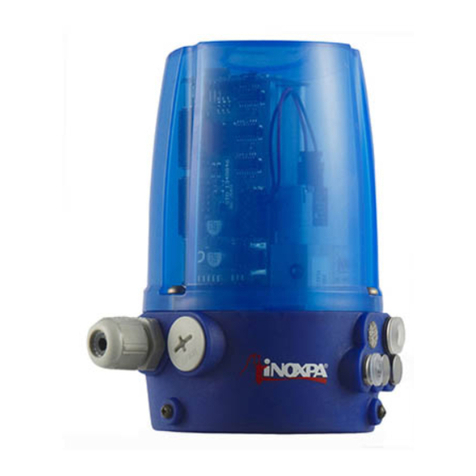
INOXPA
INOXPA C-TOP+ User manual
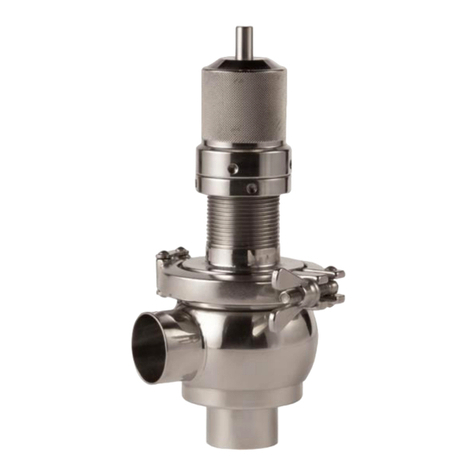
INOXPA
INOXPA OVERFLOW Manual
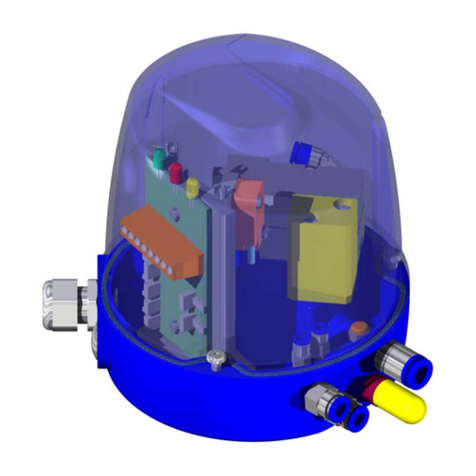
INOXPA
INOXPA C-TOP Installation and user guide

INOXPA
INOXPA NL Manual

INOXPA
INOXPA BALL Installation and user guide

INOXPA
INOXPA BUTTERFLY Manual
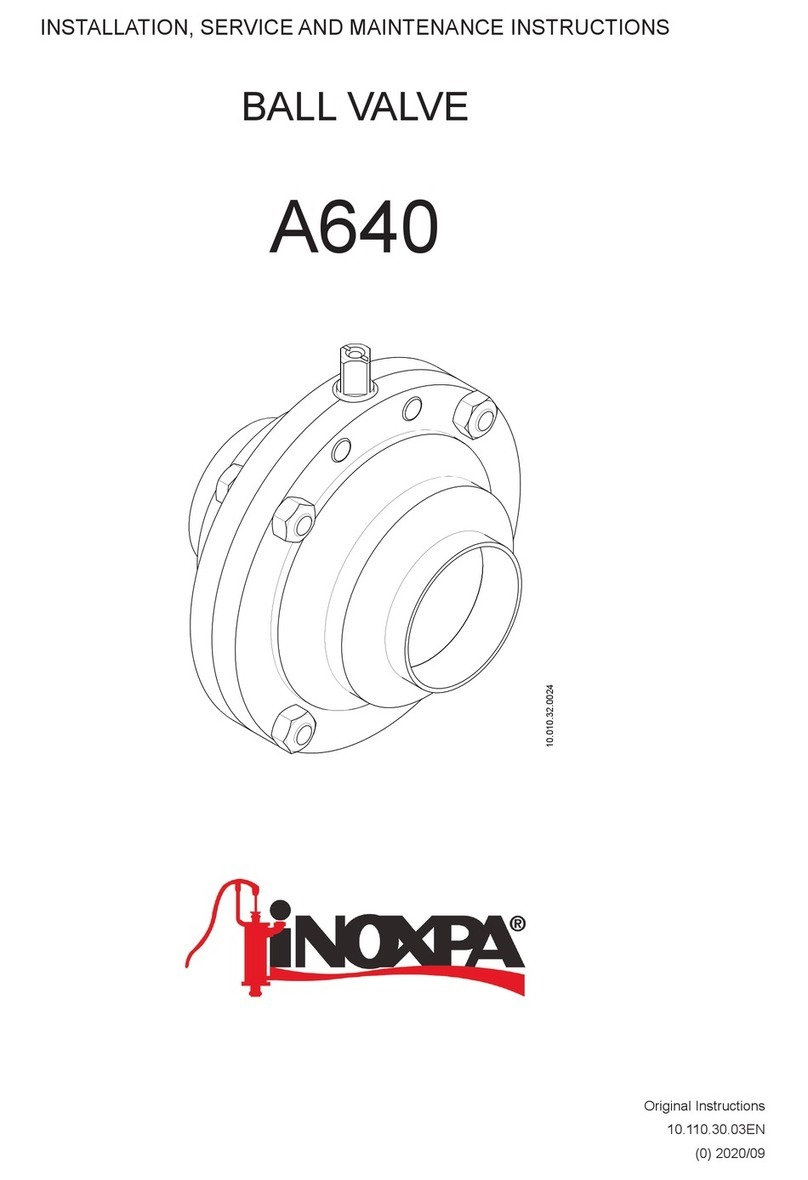
INOXPA
INOXPA BALL Manual
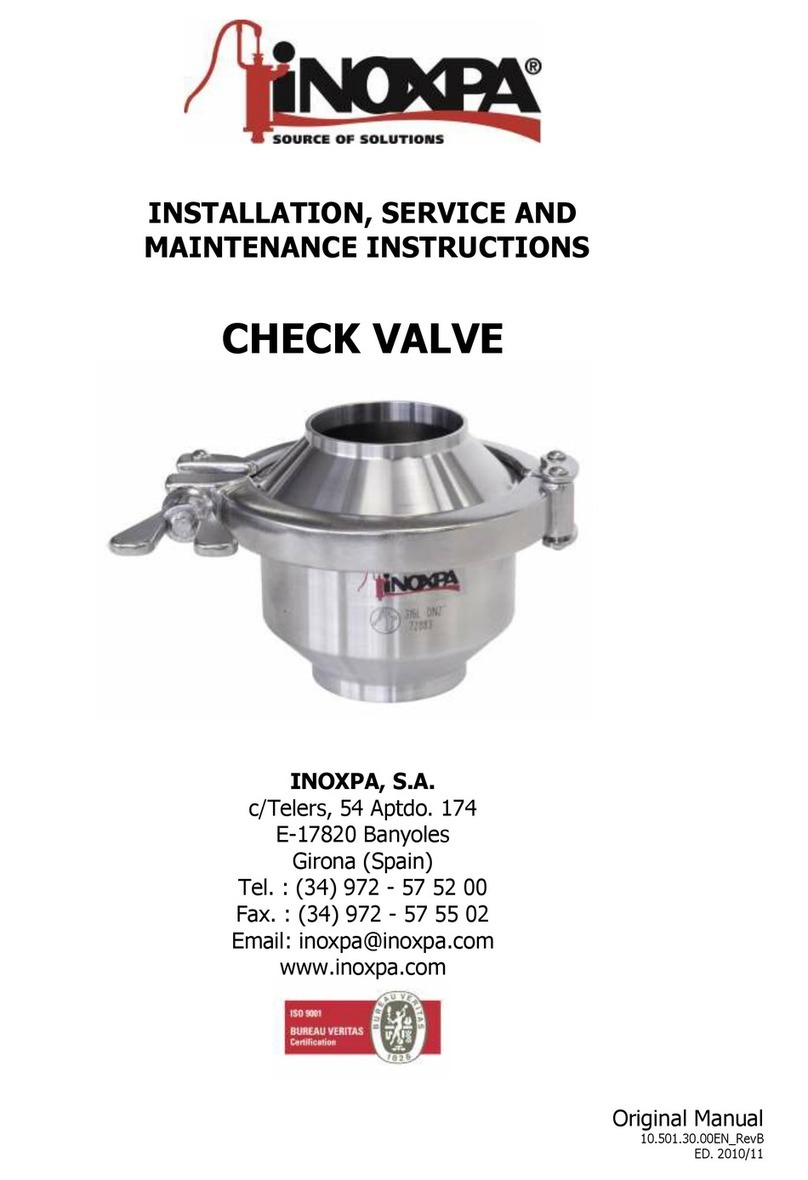
INOXPA
INOXPA 72700 Manual

INOXPA
INOXPA C-TOP+ User manual

INOXPA
INOXPA INNOVA D Manual
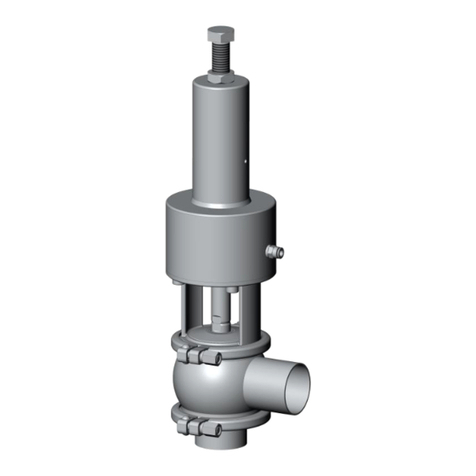
INOXPA
INOXPA INNOVA J Installation and user guide
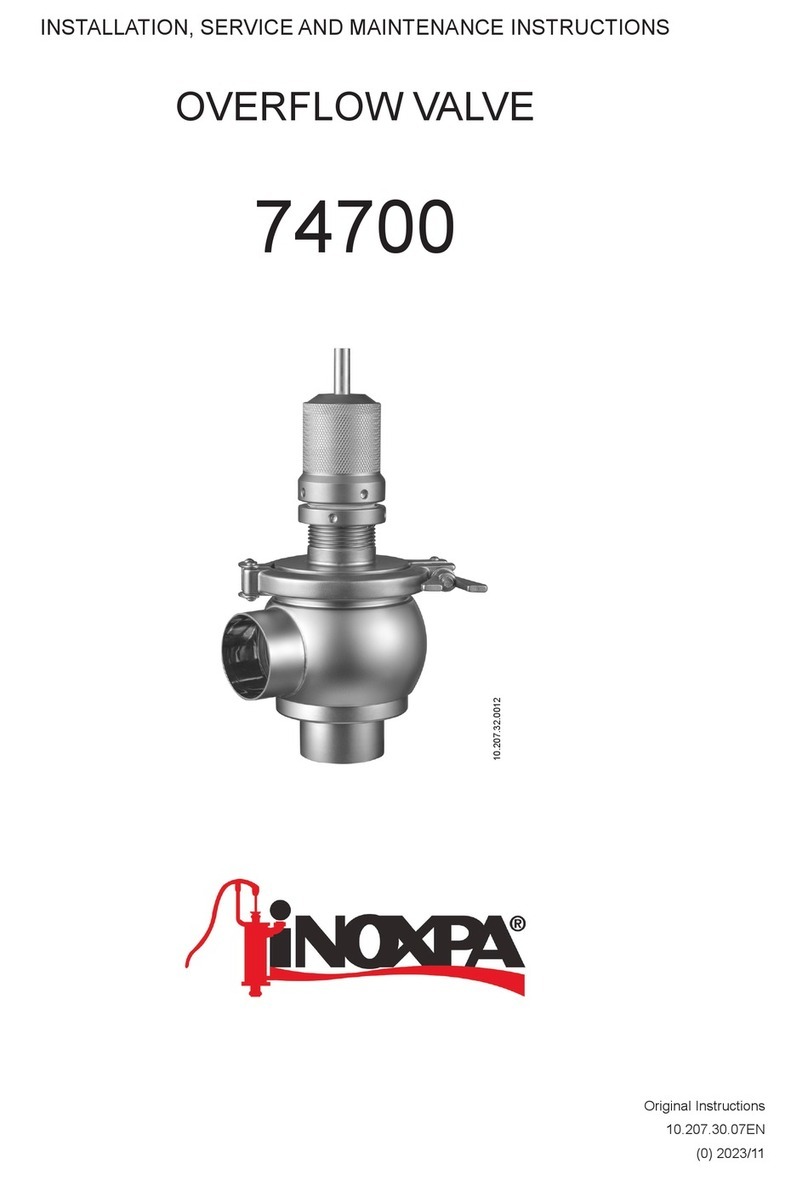
INOXPA
INOXPA OVERFLOW VALVE Manual
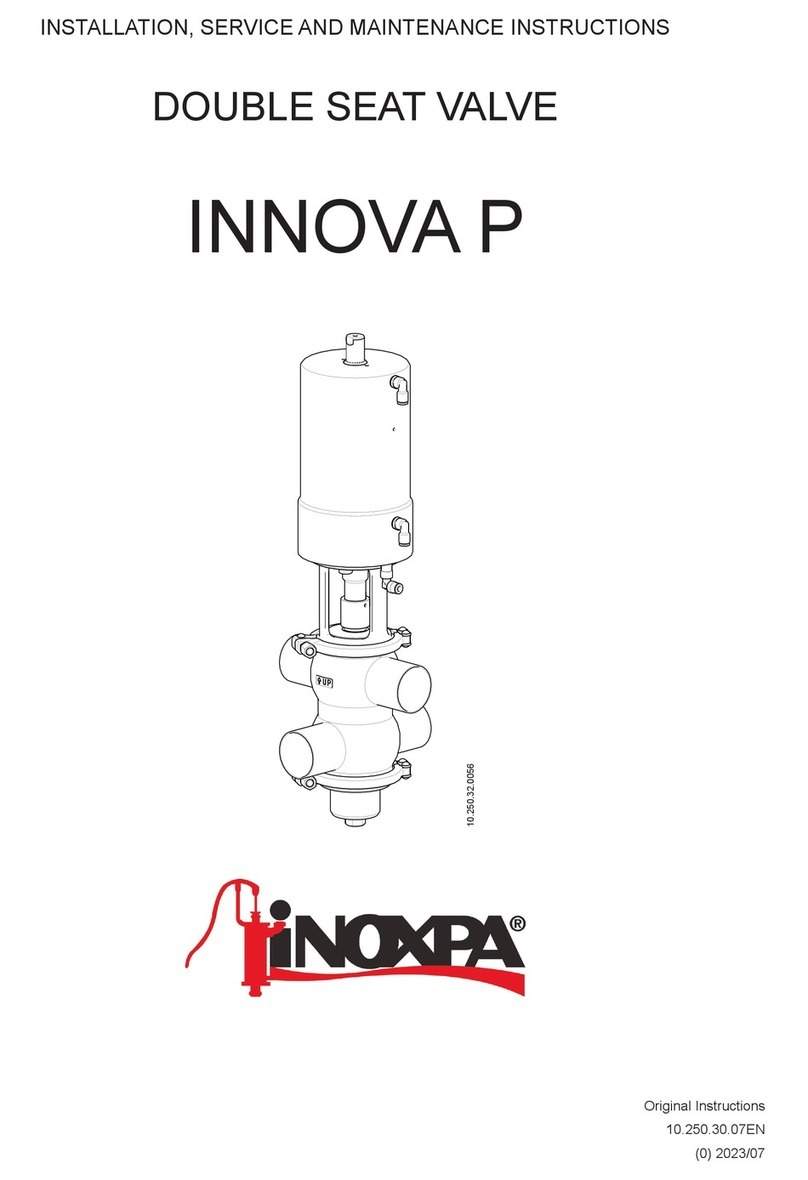
INOXPA
INOXPA INNOVA P Manual
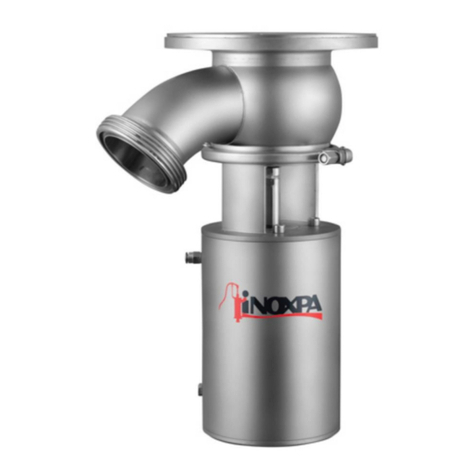
INOXPA
INOXPA INNOVA F Ex Manual
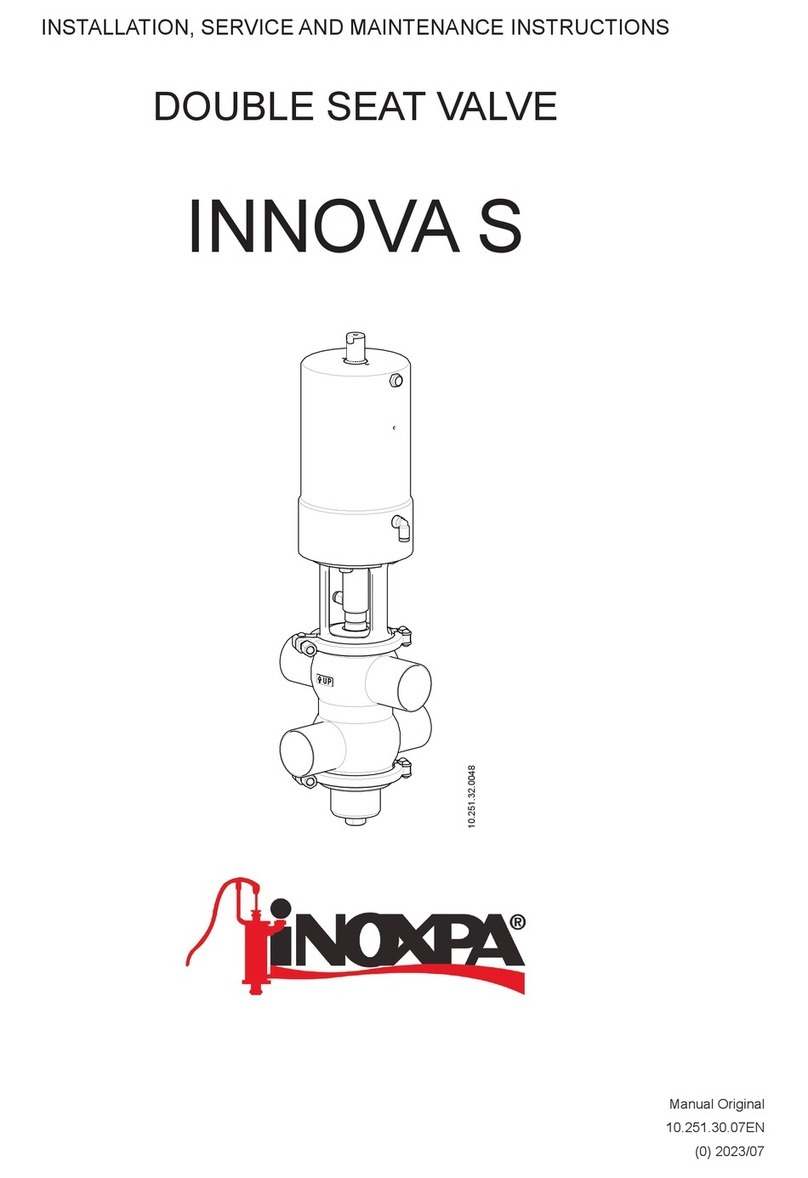
INOXPA
INOXPA INNOVA S Manual

INOXPA
INOXPA INNOVA P Series Manual

